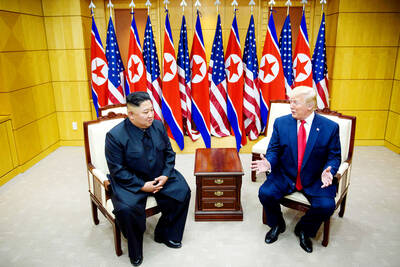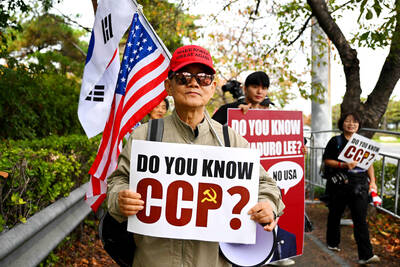The history of Sino-Russian relations is a long and tortuous one between neighbors that eyed each other with suspicion. To this day, the Russian psyche continues to be affected by memories of the Mongol invasion and fear of the “yellow peril,” with images of “barbarian” hordes pouring over the border seared in people’s consciousness. For Chinese, Russia was for a brief period a modernizer and ally, but also a threat, as during the border clashes in 1969, which came close to sparking nuclear war. On one side, Russia sees itself as a great power, one which draws ideologically mostly from Western civilization; on the other, China is rising, but its identity is firmly rooted in the Asian tradition and its focus is on domestic development and regional stability.
The long history of mistrust and ideological differences makes Russia and China the least likely of allies. But since the end of the Cold War, the two countries have grown closer and managed to settle, if only temporarily, a number of territorial disputes such as the contentious Russian Far East. Cooperation has increased dramatically in such fields as military procurement and natural resources, while Moscow and Beijing have helped create regional security bodies — such as the Shanghai Cooperation Organization — to facilitate coordination and “democratize” international relations.
This is not to say that the process of rapprochement was not without friction. As Bobo Lo, director of the Russia and China programs at the Center for European Reform, argues in Axis of Convenience, the road to convergence was marred by a combination of different expectations, underlying xenophobia and changing global circumstances. Rather than progress smoothly, relations between Moscow and China suffered many setbacks, such as when, in the wake of 9/11, Russian President Vladimir Putin allowed the US to deploy troops in Central Asia without first informing Beijing.
Lo, whose thesis rests on the assumption that international relations are becoming more, rather than less, chaotic, argues that despite the extraordinary achievements in Sino-Russian rapprochement in the past two decades or so, the notion of a “strategic alliance” is pure fantasy. The idea of strategic convergence, of a shared long-term view of the world, Lo writes, requires suspension of disbelief on Russia and China’s part, mostly because both countries are looking for different things. Tellingly, despite the closer ties, both have external reference points that give precedence to relations with the US, Europe and to a smaller extent Japan. In other words, if circumstances forced either to choose between good relations with the West or their commitment to the Sino-Russian alliance, both would conceivably choose the former. It is already clear that if China were to attack Taiwan, Russian would be unlikely to jeopardize its relations with the West for China’s sake. Similarly, Beijing has been wary of Moscow’s adventurism and has kept a safe distance lest support for Russia when its behavior creates instability undermine the image of “peaceful rise” China has been cultivating.
Still, despite the divergences and contradictions, Moscow and Beijing have made grandiose proclamations of friendship and have tended to overemphasize the importance of their alliance. This, in part, has been aimed at the US, whose presence in the Asia-Pacific region and Central Asia is unwelcome by both. Notwithstanding the shared goal of undermining US influence the region, their strategy has given rise to a triangular relationship in which Russia and China threaten each other — and the West — to go to the “other side” if they do not obtain favorable terms on a number of political matters. Russia, which sees itself as an “energy superpower,” has often played that card on oil and natural gas, threatening to “go East” and cut the flow of energy to Europe. As Lo points out, however, these threats have been more successful in putting Russia’s reliability into question than obtaining concessions from the EU or NATO.
What will likely have the greatest impact on the future of Sino-Russian relationship however, is the growing power imbalance between the two countries. Russia is a mere shadow of its former self, and despite its claim to great power status, it is no longer able to dictate outside its immediate neighborhood. It is increasingly ignored by the international community and would be more so if it weren’t for its natural resources and nuclear arsenal. China’s economic development, meanwhile, has turned it into first a regional, and now global, center of gravity. Its military, while still no match for Russia’s, has undergone rapid modernization, thanks in part to Russian arms sales. Moscow, therefore, realizes that an increasingly assertive China risks pushing it further to the periphery, and some sectors of the political establishment are using those fears to score points or stoke nationalist sentiment. One question that is often raised is whether after China completes unification with Taiwan the Russian Far East could be next. Another outlet for Russian fears is the new Great Game that is developing in Central Asia, in which Russia and China are vying to become first among equals.
Increasingly, the once subservient and underdeveloped Chinese are treating Russia as little more than a source of energy. Realistic about the reliability of Russia, however, China has wisely diversified its sources, which means it would have many alternatives to choose from if relations soured again.
What emerges from Lo’s useful book is a portrait of a relationship that is far more tactical and predicated on immediate needs than one that is based on and a shared view of what the world should be, which means that changing circumstances on the international scene will severely test its durability. With that, we can expect strategic tension, and perhaps occasional clashes, to characterize Sino-Russian relations for years to come, a scenario that Lo sees as the likeliest.
While not denying the substantial achievements that have been made in recent years, Lo convincingly argues that there is less to the Sino-Russian “strategic partnership” than meets the eye.

US President Donald Trump may have hoped for an impromptu talk with his old friend Kim Jong-un during a recent trip to Asia, but analysts say the increasingly emboldened North Korean despot had few good reasons to join the photo-op. Trump sent repeated overtures to Kim during his barnstorming tour of Asia, saying he was “100 percent” open to a meeting and even bucking decades of US policy by conceding that North Korea was “sort of a nuclear power.” But Pyongyang kept mum on the invitation, instead firing off missiles and sending its foreign minister to Russia and Belarus, with whom it

When Taiwan was battered by storms this summer, the only crumb of comfort I could take was knowing that some advice I’d drafted several weeks earlier had been correct. Regarding the Southern Cross-Island Highway (南橫公路), a spectacular high-elevation route connecting Taiwan’s southwest with the country’s southeast, I’d written: “The precarious existence of this road cannot be overstated; those hoping to drive or ride all the way across should have a backup plan.” As this article was going to press, the middle section of the highway, between Meishankou (梅山口) in Kaohsiung and Siangyang (向陽) in Taitung County, was still closed to outsiders

President William Lai (賴清德) has championed Taiwan as an “AI Island” — an artificial intelligence (AI) hub powering the global tech economy. But without major shifts in talent, funding and strategic direction, this vision risks becoming a static fortress: indispensable, yet immobile and vulnerable. It’s time to reframe Taiwan’s ambition. Time to move from a resource-rich AI island to an AI Armada. Why change metaphors? Because choosing the right metaphor shapes both understanding and strategy. The “AI Island” frames our national ambition as a static fortress that, while valuable, is still vulnerable and reactive. Shifting our metaphor to an “AI Armada”

The Chinese Communist Party (CCP) has a dystopian, radical and dangerous conception of itself. Few are aware of this very fundamental difference between how they view power and how the rest of the world does. Even those of us who have lived in China sometimes fall back into the trap of viewing it through the lens of the power relationships common throughout the rest of the world, instead of understanding the CCP as it conceives of itself. Broadly speaking, the concepts of the people, race, culture, civilization, nation, government and religion are separate, though often overlapping and intertwined. A government